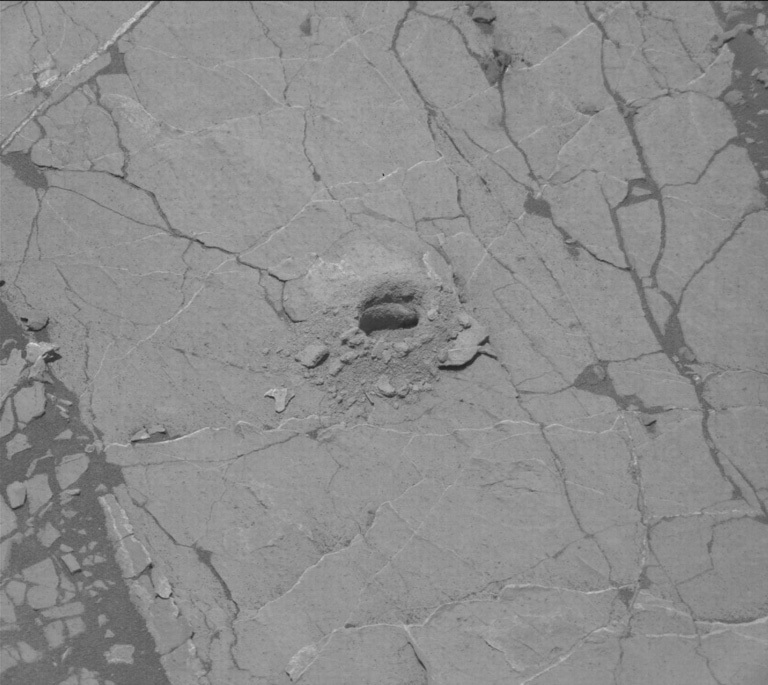3 min read

Two main activities will dominate the plan this weekend as we near the end of the “Nontron” drill campaign. Firstly, four additional portions of the drilled sample will be dropped to the SAM instrument in order to perform Gas Chromatography Mass Spectrometry next week (when we will have more power available) to further characterize the chemistry of Nontron. Secondly, the drill bit assembly will undergo what we refer to as “portion to exhaustion” to empty any remaining portions from the drill bit and prepare for dumping the rest of the drilled sample to the ground, which will also take place next week, along with analysis of the drill fines with APXS and MAHLI. These activities require detailed and precise planning by the rover engineers.
While the rover is parked at this stunning location, with the ~7-meter high “Mont Mercou” cliff in front of us and the rest of "Mount Sharp" and the sulfate-bearing unit (identified from orbit) as backdrop, we will take advantage of the view. Curiosity will acquire ChemCam passive observations of the “Rocamadour” and “Font de Gaume” targets. Rocamadour is the rounded feature on the top left of the Mont Mercou cliff and Font de Gaume is an example of one of many dark, resistant plates/fins that are eroding out of the cliff. The textures and colour variations in the cliff are mesmerizing and we are striving to understand them. We will also take a Mastcam mosaic pointed towards the sulfate-bearing hills beyond, in anticipation of our future exploration of this area.
A whole suite of environmental monitoring activities is also included in our weekend plan. We will take advantage of being parked at the same location for a period of time by imaging the drill fines around the Nontron drill hole to look for any changes due to wind activity. Mastcam will also take full tau observations pointed towards the sun at two different times of day as well as a sky survey observation. Navcam will acquire a large dust devil observation, zenith movie, suprahorizon movie and single frame line of sight observation. Standard REMS, DAN and RAD activities are also in the plan.
As the APXS payload uplink/downlink representative today it was a relatively quiet day for me. I did have to report on the downlink and the health of the APXS instrument, but until sample is dumped from the drill bit assembly we are not able to deploy the APXS, which is also on the end of the arm. However, I spent the time looking at the many images of this fascinating area and identified an interesting vein target that we will hopefully get to investigate with APXS next week. We should be able to determine what the chemistry of the vein-filling material and compare it to the chemistry of the surrounding bedrock. This could help to elucidate the nature of relatively late-stage alteration episodes affecting the rocks here.
Written by Lucy Thompson, Planetary Geologist at University of New Brunswick







